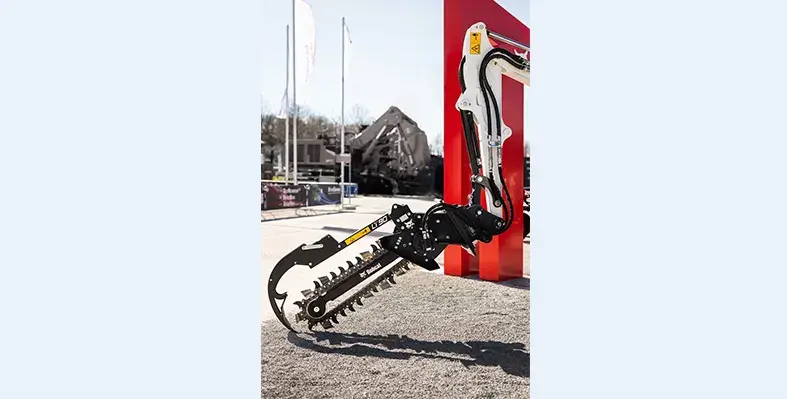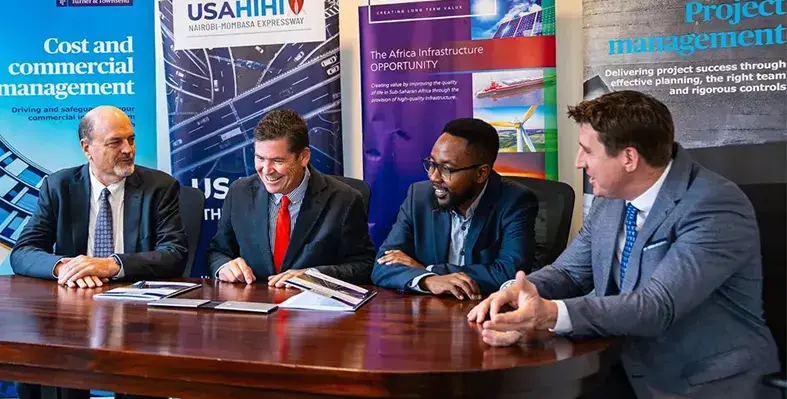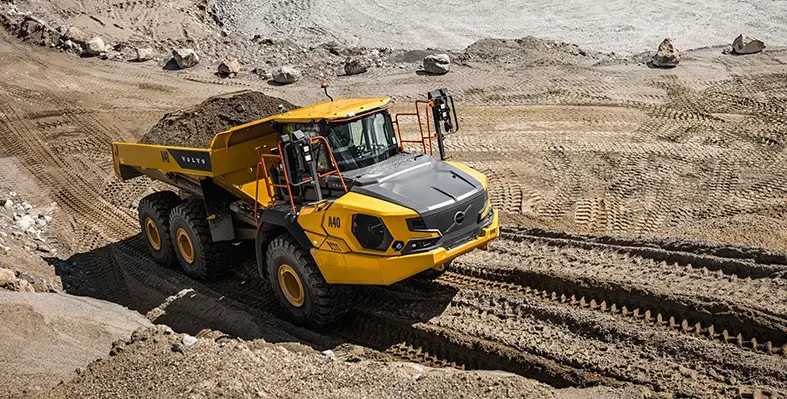
Bobcat raising the bar with attachments (Image source: Bobcat)
Bobcat is looking to step up the productivity and versatility of its compact equipment with a range of more than 120 smart and specialised attachments and solutions
The new generation of Bobcat attachments redefines the use of compact equipment, well beyond buckets, according to Katinka Kincses, Bobcat product manager for attachments in the Europe, Middle East and Africa region.
“At Bobcat, we constantly invest in the development of new attachments to ensure we meet the needs of all major and even specialised applications,” said Kincses.
In the world of compact machinery, versatility is synonymous with profitability.
Bobcat, recognised worldwide for the versatility of its compact loaders, has made its line of attachments a key pillar for multiplying the applications of its compact equipment, turning them into true ‘tool carriers’, whether in construction, landscaping, agriculture, demolition, or rental, along with other applications.
With the widest range of original attachments on the market, the company not only guarantees an effective response for almost any application, but also boosts machinery sales thanks to their adaptability.
Its design department works closely with customers, developing and producing tools to meet the main demands shared by thousands of users.
Multifunction tool
The range of attachments effectively turns a single machine into a multifunctional tool.
From buckets and forks to advanced equipment such as forestry cutters, trenchers and laser graders, Bobcat attachments stand out for their ease of use, robustness, and performance. Added to this is a constant focus on quality, safety, hydraulic compatibility and automation.
“Our commitment to innovation continues with the upcoming reintroduction of our line of post-hole diggers and trenchers. These next-generation models are designed to deliver increased performance, reducing effort in demanding tasks. Additionally, an optional LED guide improves accuracy by helping operators easily position the attachment at the desired angle.”
One of the key developments has been the Attachment Control Device (ACD) system. This innovation turns each attachment into a plug-and-play device.
When connected, the machine automatically recognises the attachment and adjusts the controls and flow rates to maximise performance. This system not only reduces human error and setup times, but also extends the life of the equipment.
Another industry-leading standard is the well-known Bob-Tach quick-attach system, developed in the 1970s. Its simplicity and reliability have even led other brands to adopt it.
Many customers emphasise that it is very intuitive, convenient, easy to use and foolproof for exchanging attachments without wasting time or effort on the part of the operator.
Rental industry
Rental companies are one of Bobcat's main customers. For them, the ease of attaching and operating attachments without an operator is essential.
Bobcat has responded to this demand with systems such as ACD and new features that improve the operator experience: engine-independent speed management, drift compensation and full control from a single joystick.
In addition, it has developed training tools and remote support, including QR codes on attachments, so users can easily access quick guides or tutorials without the need for direct technical assistance.
Although construction remains a key market, sectors such as landscaping, demolition and agriculture also demand an increasingly specialised range of attachments.
The group’s Attachments division represents a key element in Bobcat's expansion, fundamental for expanding applications across a wide variety of sectors and machines.
It means telehandlers are no longer limited to lifting and material handling, while excavators now perform much more than trenching.
Its wide range of attachments has become a differentiating factor for Bobcat, allowing dealers to offer the right tool to fit customer needs to carry out any task that may arise, in all sectors: including construction, demolition, road maintenance, agriculture, forestry, precision grading, beach cleaning, landscaping and others.
Read more:
Work smarter, not harder: Discover the new Volvo wheel loaders
Bobcat unveils limited-edition mini excavators
Saint-Gobain highlights infrastructure growth potential









